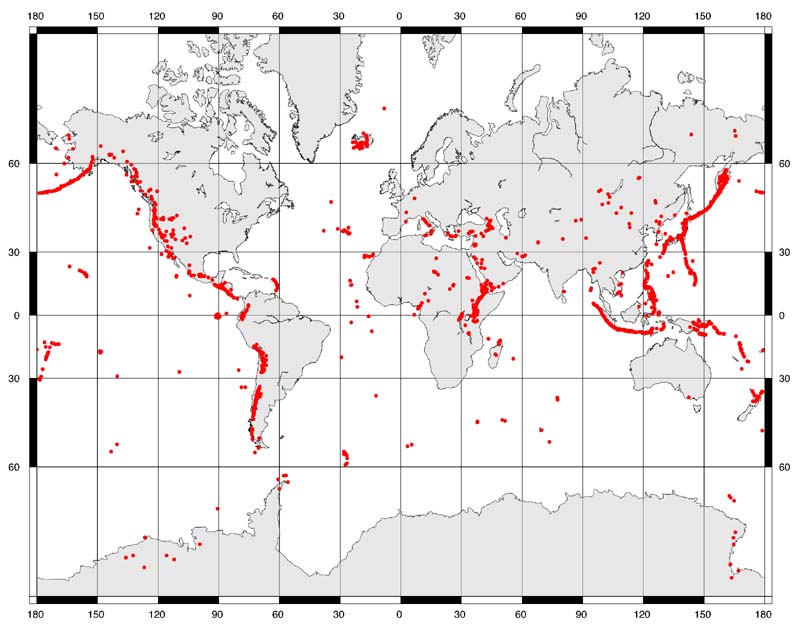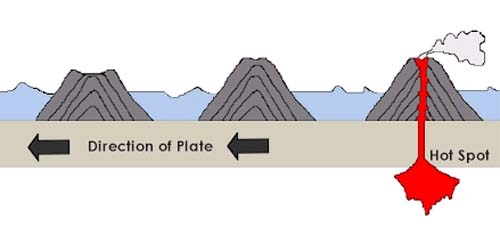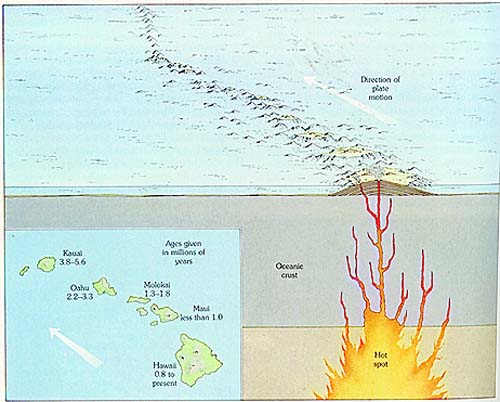Plate Tectonics, Earthquakes and Volcanoes
| Volcanism is associated with two of the plate boundary types: divergent and convergent margins. The former manifest themselves as long volcanic rifts mostly in the ocean basins (ocean ridges) whereas the latter typically make individual volcanoes on the plate that "wins out" in the collision process (i.e., does not subduct). | |
 |
|
|
Map
showing the global distribution of volcanoes.
|
|
| Where two plates containing continental crust at their margins collide, there is little or no volcanism (such as at the Himalaya). |
 |
|
Occasionally, plate boundaries where plates are mostly sliding by each other can experience small amounts of volcanism as well if there is a component of extension across this boundary. |
 |
| Volcanism can also occur at intraplate volcanoes. These volcanoes are believed to have sources deeper down in the Earth's mantle that remain in a relatively fixed location relative to the always migrating plate boundaries. |
 |
| Mauna Loa and Kilauea in Hawaii are the classic examples of intraplate volcanoes. Such volcanoes can also be seismically active, particularly when volcanic structures are built up rapidly. |
 |
 |
 |
Brooklyn College - Geology Department